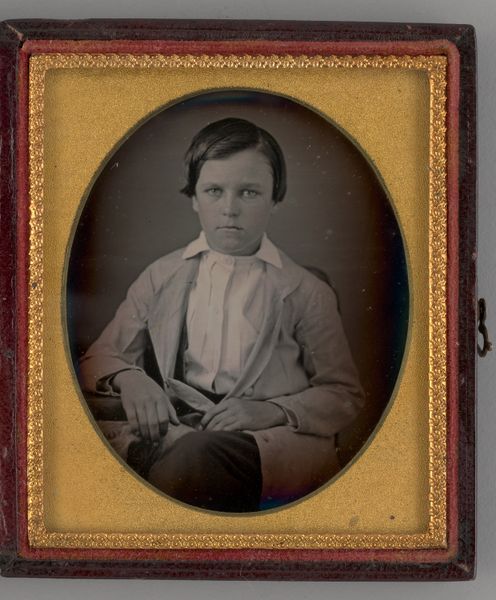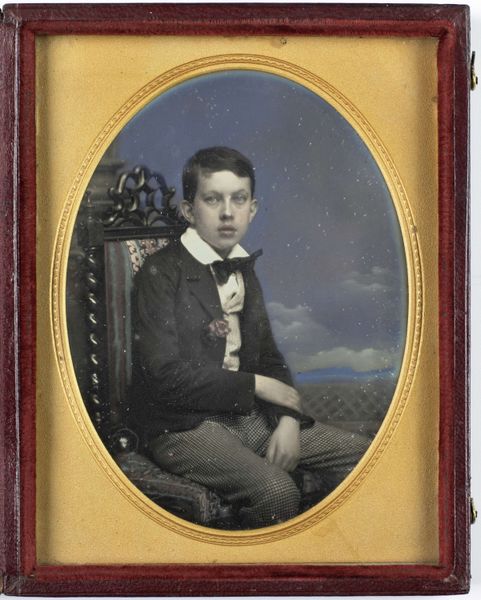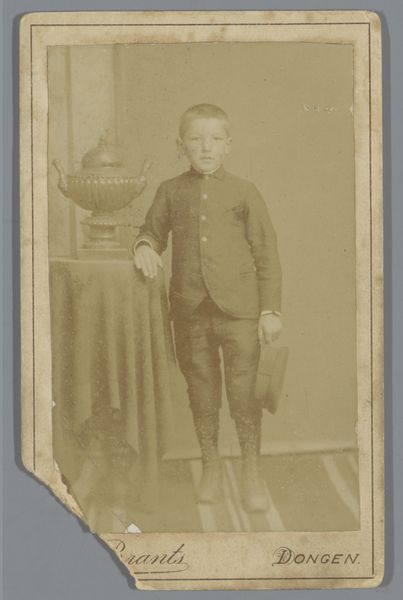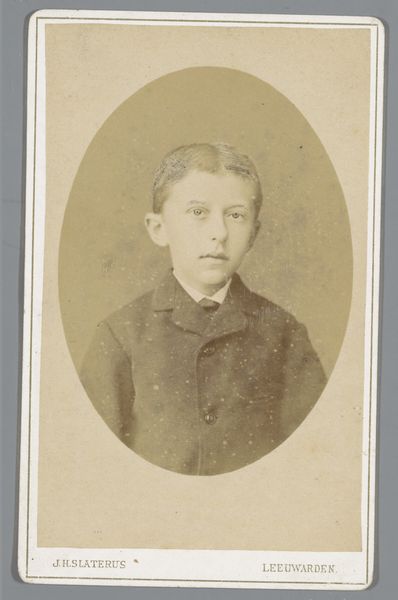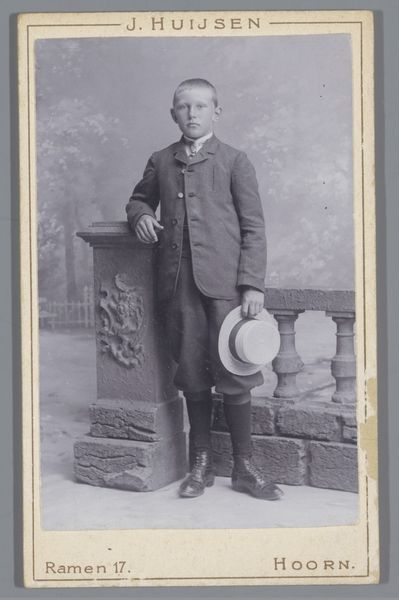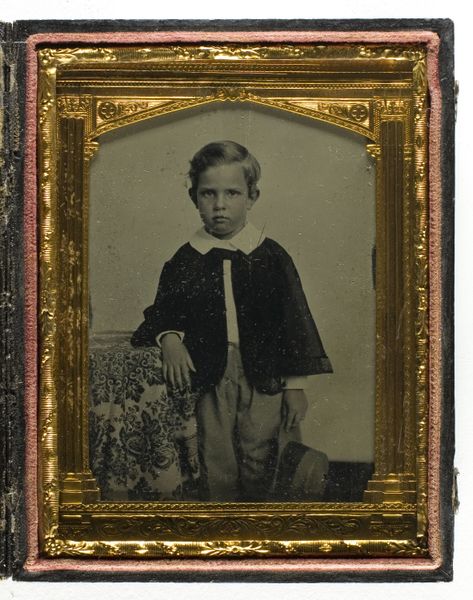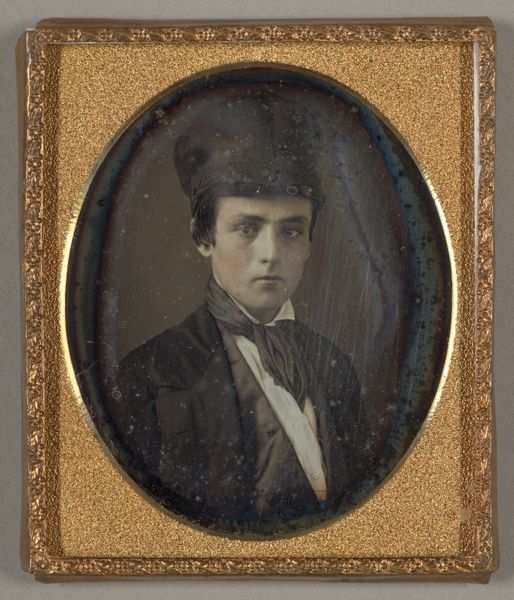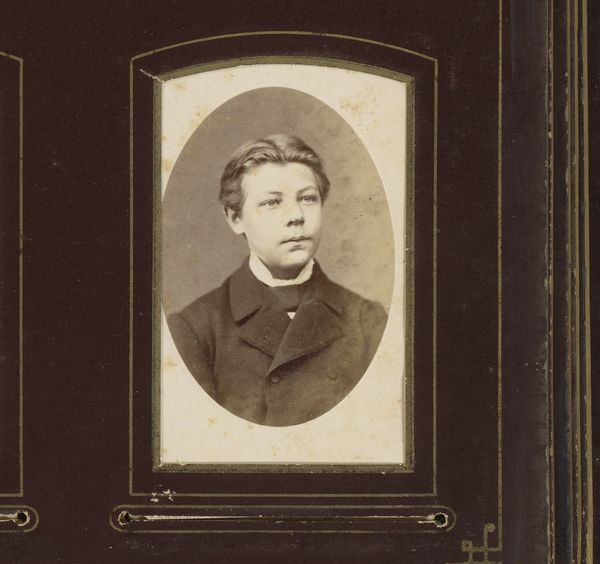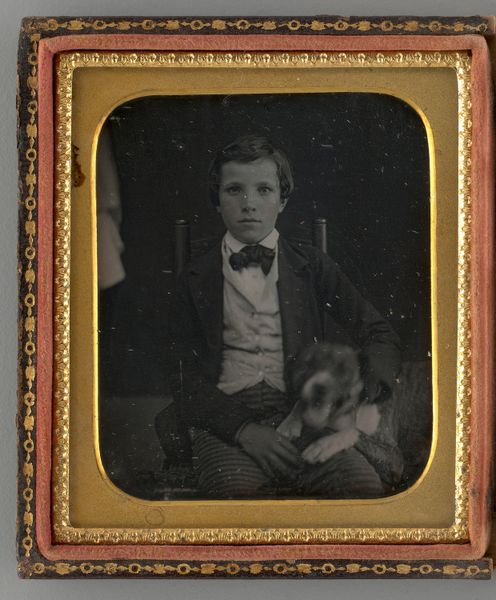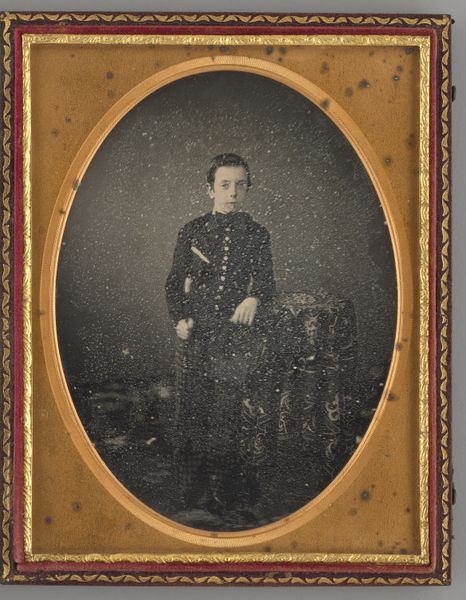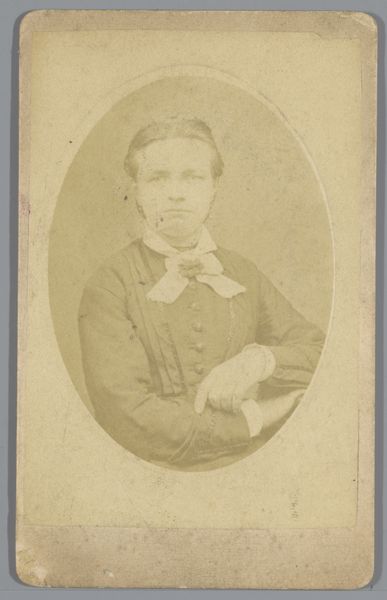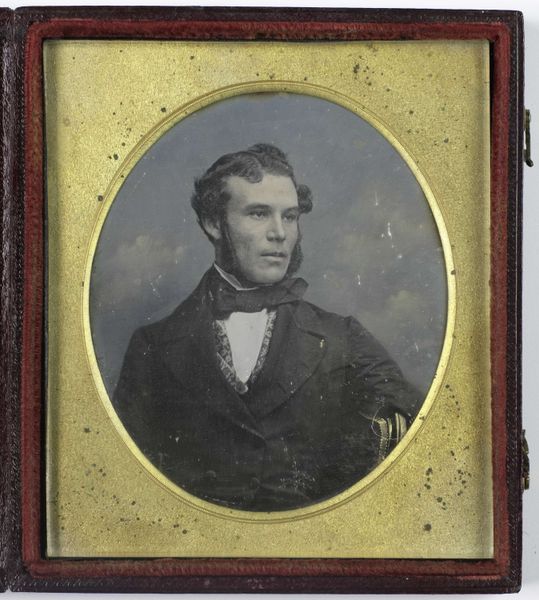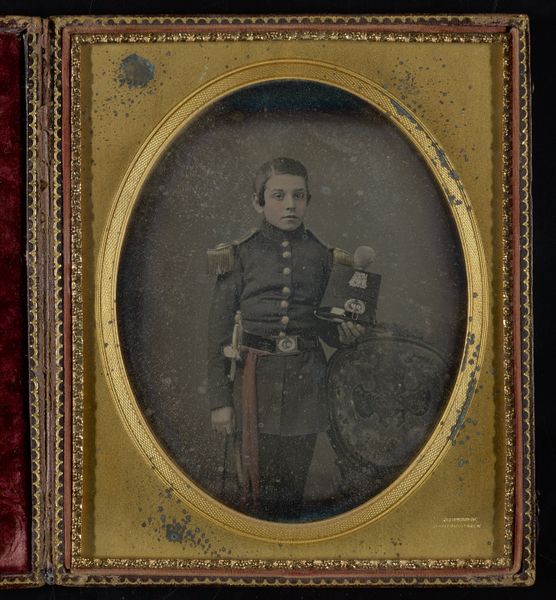
daguerreotype, photography
#
portrait
#
16_19th-century
#
daguerreotype
#
photography
#
realism
Dimensions: image (visible): 7.4 × 6 cm (2 15/16 × 2 3/8 in.) mat: 8.1 × 7 cm (3 3/16 × 2 3/4 in.) case (closed): 9.4 × 8.1 × 1.6 cm (3 11/16 × 3 3/16 × 5/8 in.)
Copyright: National Gallery of Art: CC0 1.0
Curator: Here we have "Portrait of a Boy," a daguerreotype from around 1858 by Charles H. Williamson. The metallic sheen is quite something, isn't it? Editor: Haunting. It's the boy's eyes, I think. So still, almost unnervingly composed for a child. Makes you wonder what childhood looked like back then. Did they not smile for photographs? Curator: It's less about smiling and more about the material reality of early photography. The daguerreotype process, being exposure-intensive, demanded absolute stillness. It's fascinating how a technical limitation shapes the subject’s perceived affect and social conventions about portraiture. Editor: Absolutely. Thinking about the labor behind this – the photographer, the artisan crafting the frame, even the boy having to stay so incredibly still, its hard. And that clothing... such dark heavy material for a kid's jacket. No wonder he isn’t grinning from ear to ear. I almost want to reach into the past and buy him an ice cream or something. Curator: The materials chosen aren't accidental. Think about the burgeoning middle class, eager to participate in visual culture through reproducible portraiture. This little portrait signifies that entry, using materials designed to impress. Editor: That ornamental frame feels essential to that impression, adding a layer of bourgeois display. Does it tell us something of what family members or people in the community thought important? Beyond the immediate value in portraying their child. Almost aspirational? Curator: Indeed. It also serves to monumentalize the portrait—the ornate setting elevates what might be seen simply as an image of a young boy, emphasizing a sense of posterity and family legacy through art. Editor: He has a medal too. Fascinating. Even in this somber formality, I catch a glimpse of individuality. And for such a small, intimate picture, I still see a whole social world within. It’s a very beautiful image, really. Curator: It encapsulates an era and material ambition—early photographic processes, labor, commodity, and aspiration – and you’ve added that vital emotional insight. Editor: That’s a lot for one small shiny square, but, somehow, this photo bears it all. Thanks for the insight!
Comments
No comments
Be the first to comment and join the conversation on the ultimate creative platform.
